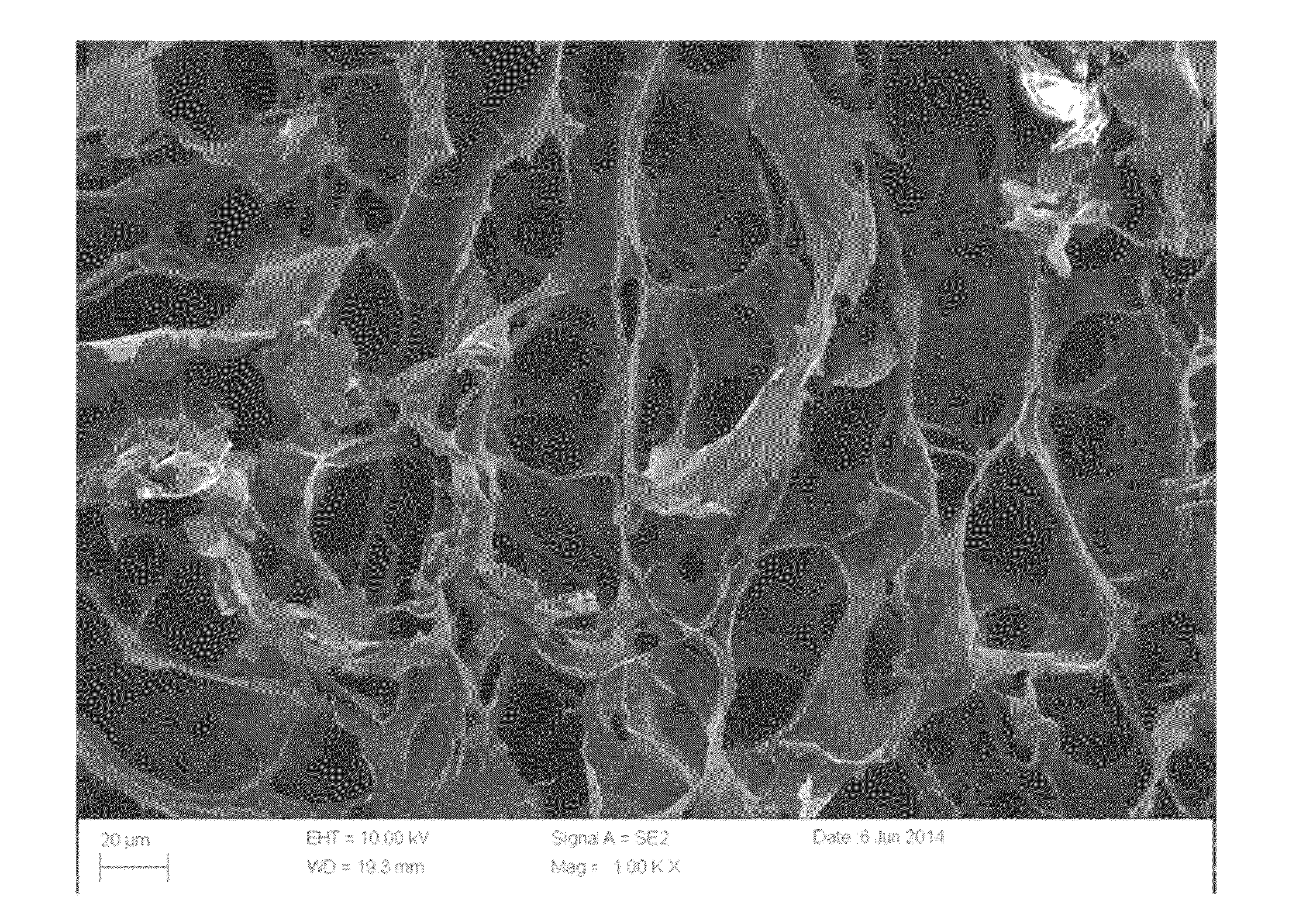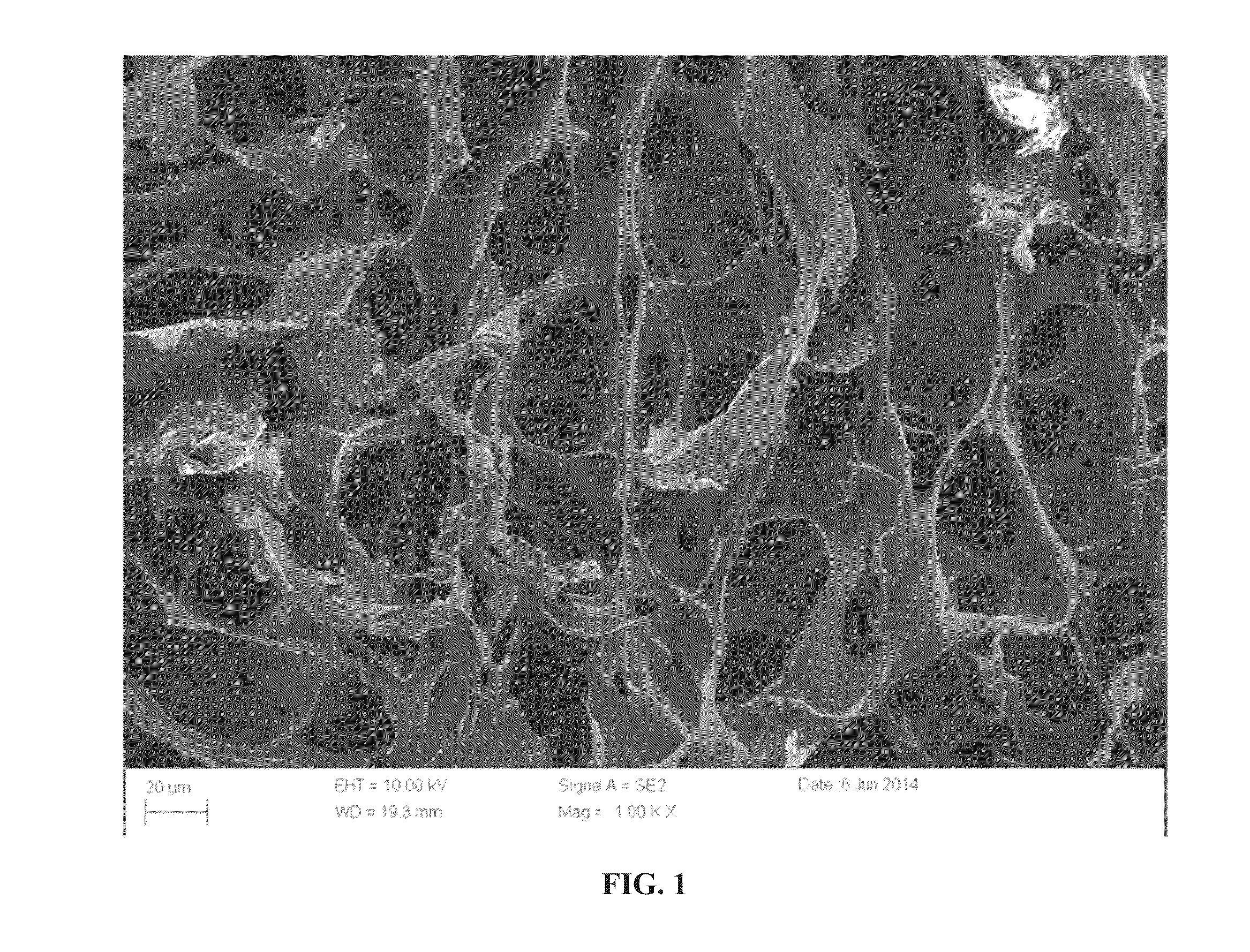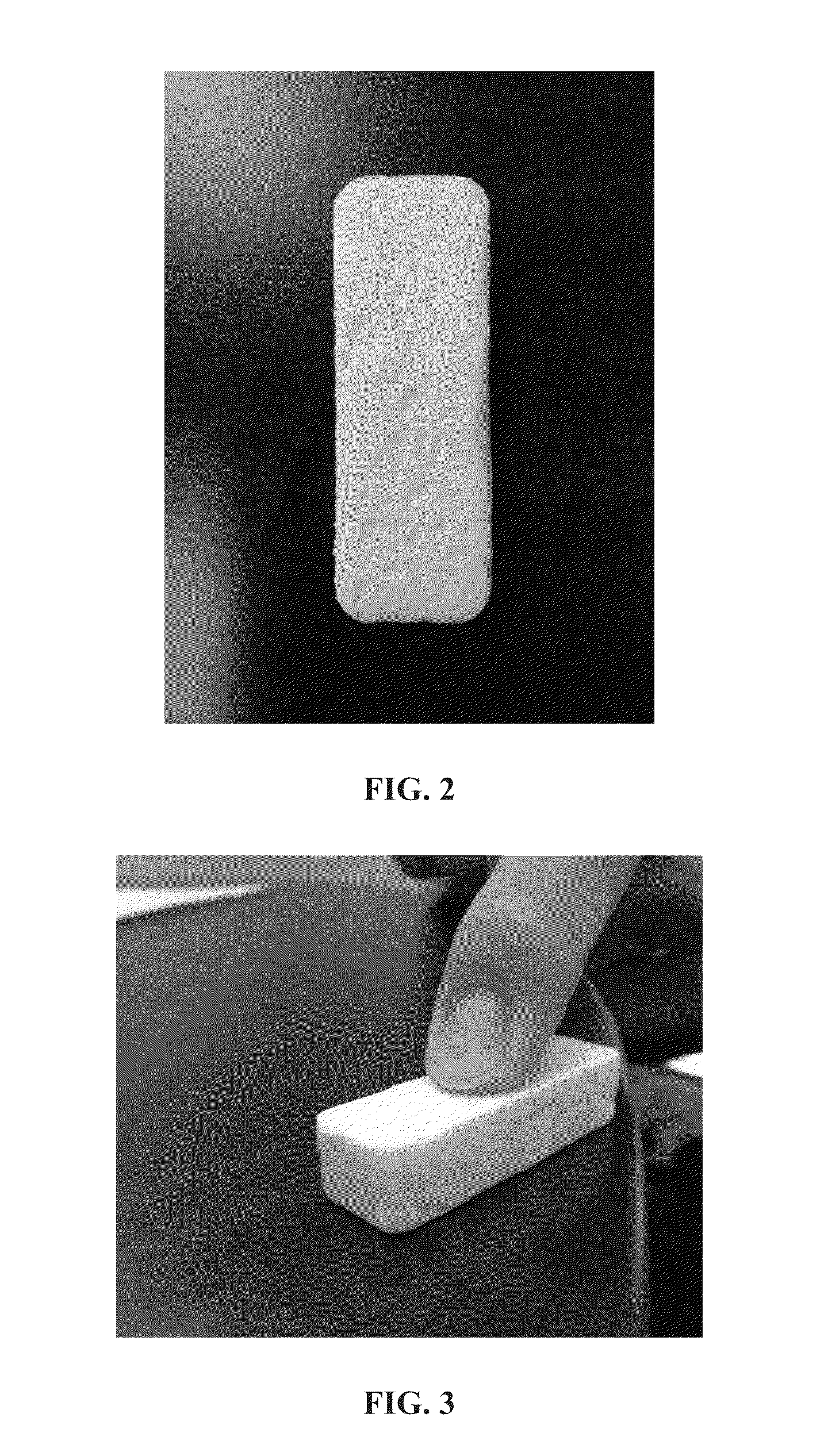Resilient foams and uses thereof
- Summary
- Abstract
- Description
- Claims
- Application Information
AI Technical Summary
Benefits of technology
Problems solved by technology
Method used
Image
Examples
example 1
Preparation of a Resilient Foam and Thixotropic Hydrogel
[0069]The resilient foam can be prepared as outlined in the flow chart of shown in FIG. 8. In step 800, rayon was converted to carboxymethyl cellulose knit. The carboxymethyl cellulose knit was dissolved in water to form a gel having about 7 wt. % of carboxymethyl cellulose with the balance being water (Step 802). The gel was cast into a mold shaped and sized for use as a nasal stent (Step 804). The mold was subject to freeze drying conditions (Step 806) to form the rigid foam as depicted in FIG. 3. The rigid foam in Step 806 was subjected to water vapor to form the resilient foam (Step 808) depicted in FIGS. 4A and 4B.
PUM
| Property | Measurement | Unit |
|---|---|---|
| Temperature | aaaaa | aaaaa |
| Temperature | aaaaa | aaaaa |
| Time | aaaaa | aaaaa |
Abstract
Description
Claims
Application Information
 Login to View More
Login to View More - R&D
- Intellectual Property
- Life Sciences
- Materials
- Tech Scout
- Unparalleled Data Quality
- Higher Quality Content
- 60% Fewer Hallucinations
Browse by: Latest US Patents, China's latest patents, Technical Efficacy Thesaurus, Application Domain, Technology Topic, Popular Technical Reports.
© 2025 PatSnap. All rights reserved.Legal|Privacy policy|Modern Slavery Act Transparency Statement|Sitemap|About US| Contact US: help@patsnap.com



